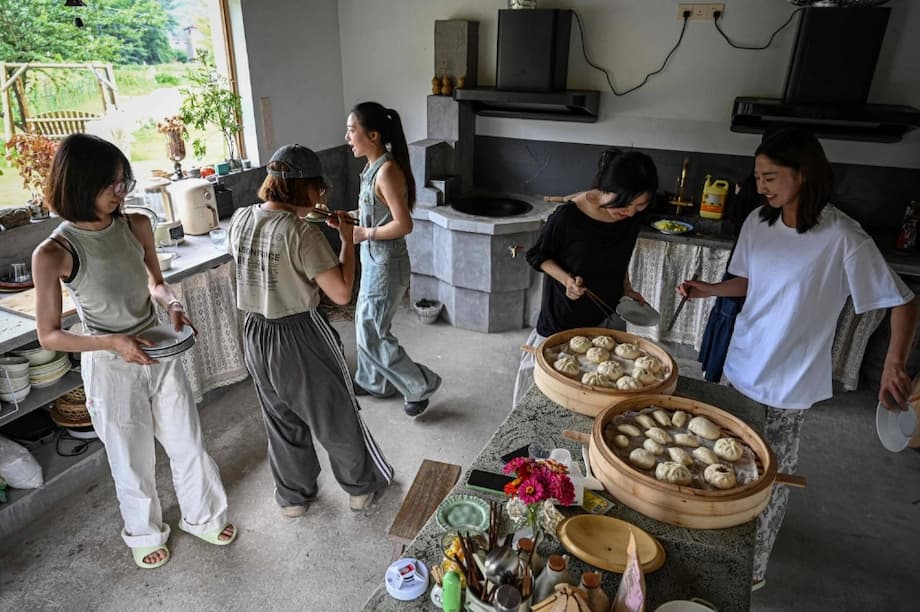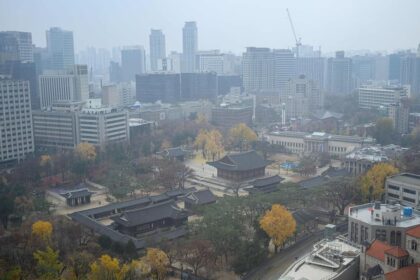Women-Only Co-Living Spaces: A Growing Movement in China
In the rolling hills of Zhejiang province, laughter and conversation fill the air at a rural cottage where women gather to play board games, share coffee, and cook together. This is not just a weekend retreat but part of a rapidly expanding trend in China: women-only co-living spaces. These communities offer women a rare haven from social pressures, family expectations, and the male gaze—a place where they can simply be themselves.
Across China, from rural cottages to urban cultural hubs, women are increasingly seeking out single-gender environments. The reasons are as varied as the women themselves: some come for companionship, others for mutual support, and many for a sense of safety and freedom that can be hard to find elsewhere. As China’s society undergoes significant shifts, these spaces are flourishing, reflecting deeper changes in gender roles, economic power, and social expectations.
Why Are Women-Only Spaces Flourishing?
The surge in women-only co-living spaces is rooted in a complex mix of social, economic, and cultural factors. For many Chinese women, traditional expectations remain deeply entrenched. Family gatherings often bring intrusive questions about marriage and children, while the workplace can be fraught with harassment and discrimination. In this context, women-only communities offer a rare respite.
Participants describe these spaces as liberating. Zhang Wenjing, 43, explains,
An all-women environment makes me feel safe.
For others, the appeal is more practical. Chen Fangyan, 28, notes,
Not being forced to wear a bra is already a kind of freedom.
The absence of men allows for candid conversations about intimate topics and relieves the pressure to conform to societal expectations of femininity and decorum.
Demand for single-gender spaces extends beyond co-living. Women-only bars, gyms, hostels, and co-working hubs are also on the rise, as women flex their growing economic independence to secure peace of mind and physical safety.
Economic Independence and Social Media: Catalysts for Change
China’s rapid economic development has empowered more women to pursue higher education and careers, giving them greater financial autonomy. This independence translates into more choices about how—and with whom—they live. Yuan Xiaoqian, 29, a participant in one such community, observes,
Women’s increasing economic independence and educational opportunities mean a wider scope of options. They can focus more on themselves and on new needs.
Social media platforms, especially Xiaohongshu (also known as Rednote), have played a crucial role in spreading awareness of these alternative lifestyles. Women use these platforms to share experiences, organize events, and connect with like-minded individuals. The result is a growing network of women supporting each other and exploring new ways of living outside traditional norms.
Inside China’s Women-Only Communities
One of the most prominent examples is Keke’s Imaginative Space, founded by Chen Yani (nicknamed Keke) in Lin’an, a suburb of Hangzhou. After experiencing harassment from men in the workplace, Chen was inspired to create a safe, relaxed environment for women. She began by renovating a house and inviting women to stay over Chinese New Year, using Rednote to spread the word. Twelve women attended the initial gathering, seeking everything from a change of scenery to an escape from family pressures.
At Keke’s Imaginative Space, participants pay a modest fee—30 yuan (about $4.15) per night, rising to 80 yuan after the fourth day. The focus is on community: women cook, play games, and talk freely, supporting each other through life’s challenges. Chen explains her motivation:
I encountered various degrees of harassment from men, to the point where I often found myself unable to work normally. I started thinking about what a safe and relaxed work environment would look like—a place where I wouldn’t feel apprehensive.
Another notable example is Her Space in Xiuxi village, also in Zhejiang. Founded by Yang Yun, Her Space offers a spiritual haven for women, complete with rustic furniture and calligraphy on the walls. The property has the feel of a boutique hotel, but its true value lies in the sense of belonging it provides. Over 120 women have paid the 3,980-yuan membership fee to join the club, though Yang emphasizes that attendance is less important than the knowledge that the space exists.
If a woman loses her job, her parents, has an argument with her husband, or feels exhausted by city life, she knows she can come here and find some warmth.
In Beijing, Half the Sky—a cultural space founded by Lilith Jiang—fills a similar void. Jiang points out that men have plenty of opportunities to socialize, whether drinking or exercising, but women often lack such spaces. She believes that community-oriented facilities like hers are essential for women’s well-being and social development.
What Draws Women to These Spaces?
For many, the appeal is simple: a place to just be themselves. Within families, women are often expected to care for grandparents, children, and manage household chores, in addition to their work responsibilities. The burden of these roles can be overwhelming. In women-only communities, participants are free from these expectations and can focus on their own needs and desires.
Some women are drawn by the promise of companionship and mutual support, especially those who are single or worried about aging alone. As Lilith Jiang notes,
Women are constantly told: If you don’t get married, what will become of you when you get older? But long-term, all-female shared co-living spaces where women can grow old together could be a solution.
Others seek refuge from harassment or simply want a break from the relentless pace of city life. The sense of safety and sisterhood is a powerful draw, offering mental strength and emotional support that can be hard to find elsewhere.
Criticism and Controversy: Are Women-Only Spaces Exclusionary?
Not everyone is enthusiastic about the rise of single-gender communities. Critics argue that women-only spaces foster antagonism between men and women, potentially deepening social divides. Some worry that these communities represent a retreat from broader efforts to achieve gender equality in society at large.
Founders and participants, however, reject the notion that these spaces are about exclusion or antipathy towards men. Chen Yani insists,
Women constitute a social group with shared life trajectories and problems. It’s often easier for them to understand each other and show empathy.
The focus, she says, is on empathy and shared experience, not on harboring resentment.
Moreover, these communities are not intended as permanent escapes from society. Many women participate temporarily, using the time to recharge, reflect, and build supportive networks before returning to their everyday lives. The existence of such spaces, say advocates, is a sign of progress—a recognition that women’s needs and experiences deserve attention and respect.
Financial Sustainability and the Future
Despite their popularity, many women-only co-living spaces are not yet profitable. For founders like Chen Yani, financial gain is not the primary goal.
As long as there’s demand, this place will continue to exist.
The focus is on meeting a genuine social need, even if it means operating at a loss for now.
Looking ahead, some believe that women-only communities could play an even larger role in Chinese society. As more women delay marriage or choose to remain single, the demand for alternative living arrangements is likely to grow. All-female co-living spaces could offer a solution for women concerned about aging alone, providing companionship and support in later life.
Broader Implications: Gender, Power, and Social Change
The rise of women-only co-living spaces in China is part of a broader shift in gender dynamics. As women gain economic power and social visibility, they are challenging traditional norms and carving out new spaces for themselves. These communities reflect a desire for autonomy, safety, and connection—values that resonate with women around the world.
At the same time, the movement highlights persistent challenges. Gender-based harassment, family pressure, and societal expectations remain significant obstacles for many women. The popularity of women-only spaces is both a response to these challenges and a testament to women’s resilience and creativity in finding solutions.
Social media has amplified these trends, enabling women to share their stories, organize events, and build supportive networks. The result is a vibrant, evolving landscape of women’s communities that is reshaping the social fabric of China.
In Summary
- Women-only co-living spaces are gaining popularity across China, offering safe havens from social pressures, harassment, and family expectations.
- Economic independence, educational opportunities, and social media have empowered women to seek out and create these communities.
- Spaces like Keke’s Imaginative Space, Her Space, and Half the Sky provide companionship, support, and freedom for women of all ages.
- Critics argue that single-gender communities may foster social division, but founders and participants emphasize empathy and shared experience, not exclusion.
- While not always profitable, these spaces fill a vital social need and may offer long-term solutions for women concerned about aging alone.
- The movement reflects broader changes in gender roles and social expectations in China, as women assert their autonomy and reshape the landscape of community living.












